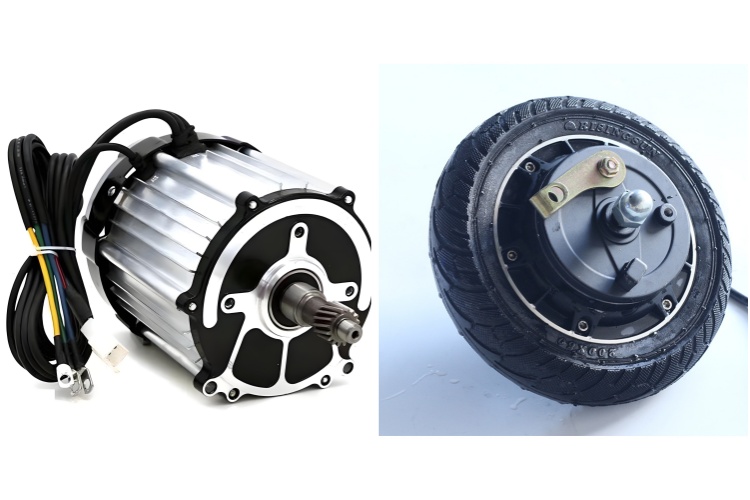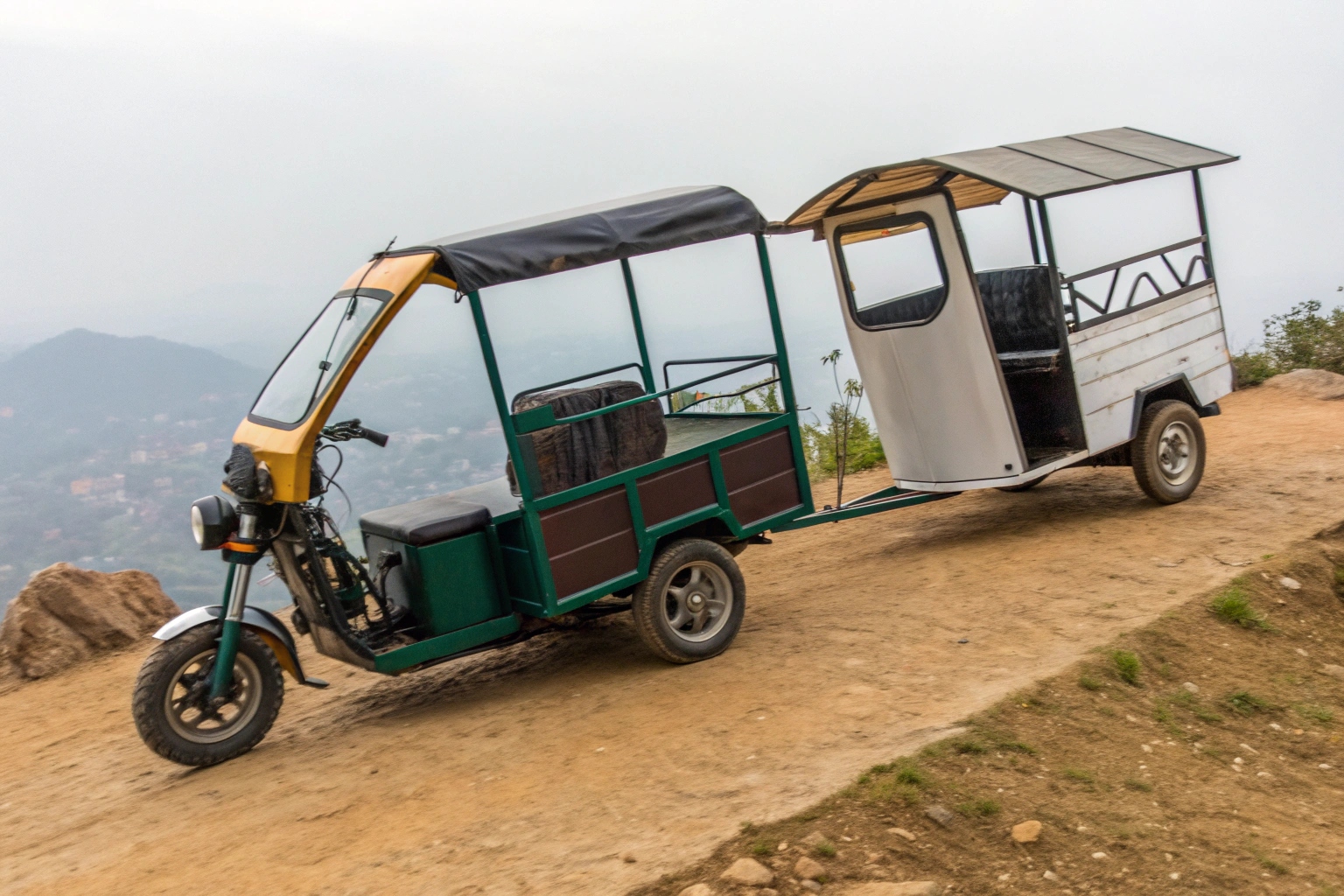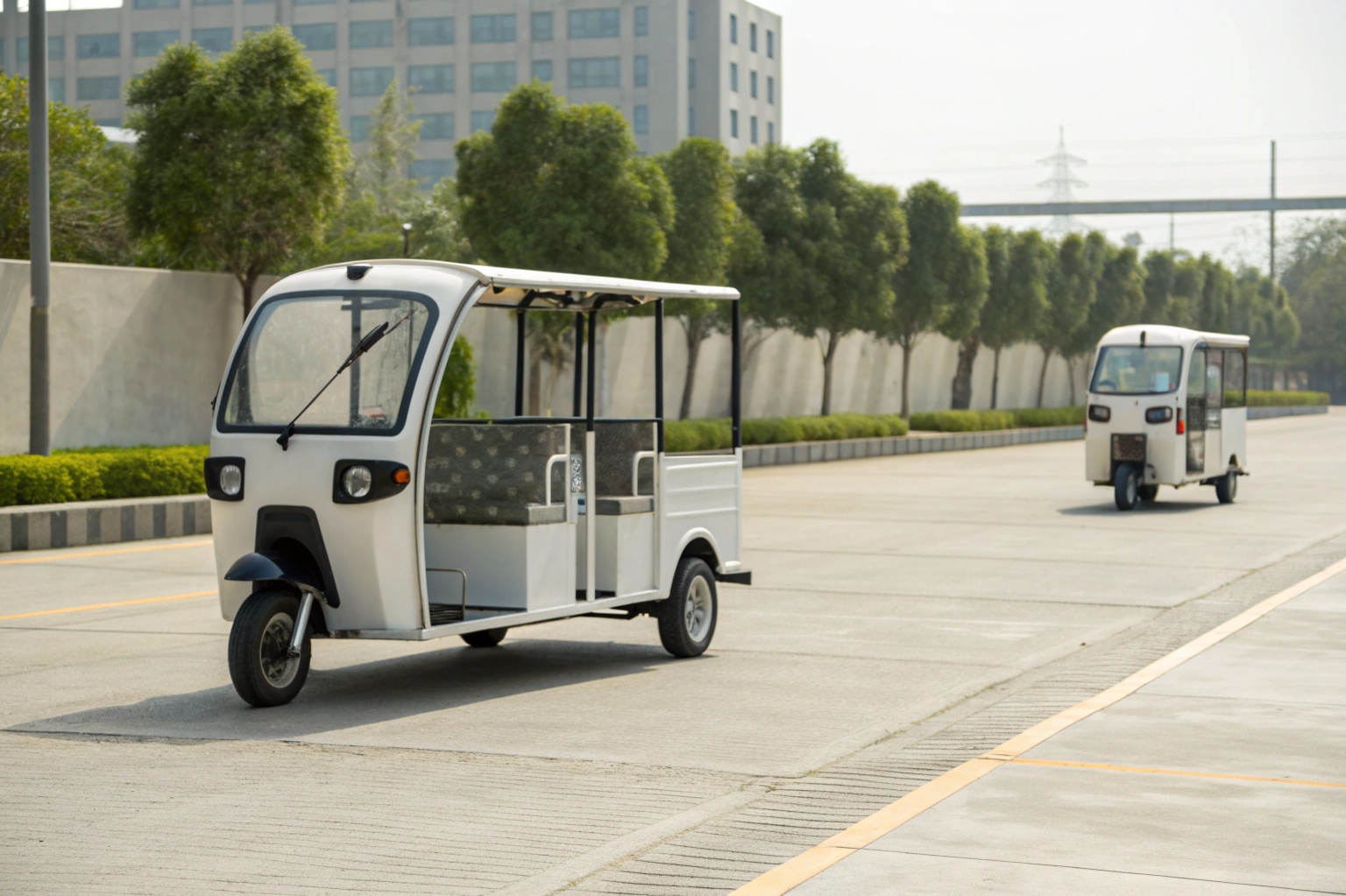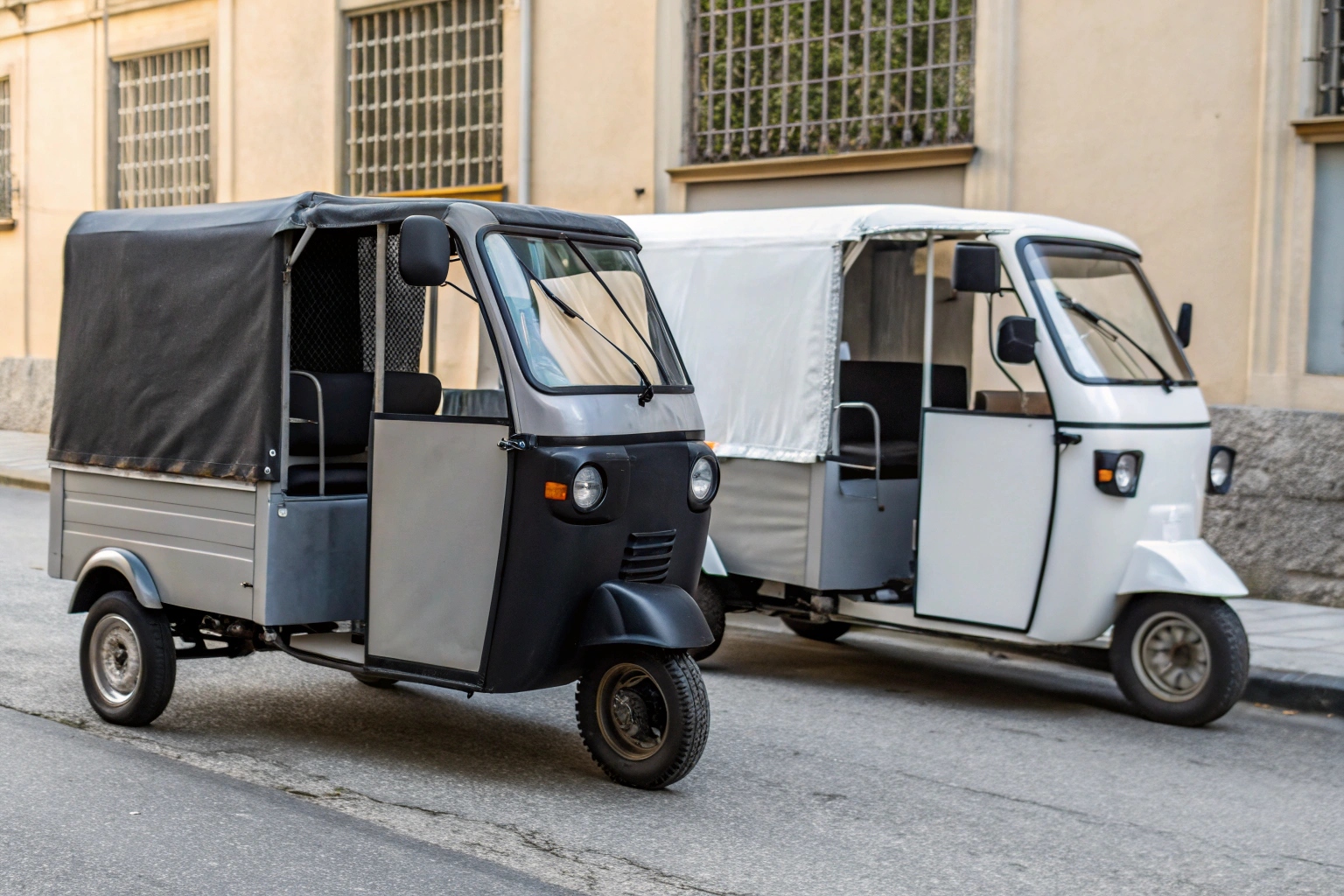Memilih motor yang salah untuk armada Anda bisa menjadi bencana. Anda mungkin akan mendapatkan becak yang tidak dapat menangani pekerjaan tersebut atau Anda mengeluarkan uang terlalu banyak untuk teknologi yang tidak dibutuhkan pasar Anda.
Untuk medan datar dan penggunaan tugas ringan, motor hub belakang yang hemat biaya adalah pilihan yang dapat diandalkan. Untuk beban berat, tanjakan terjal, dan efisiensi maksimum, motor mid-drive yang lebih mahal adalah investasi yang unggul.

Kami pernah memiliki klien dari Mauritius yang sebelumnya membeli sejumlah sepeda roda tiga dari Belanda untuk mengangkut makanan dan perbekalan antar hotel di dalam kawasan resor. Meskipun sepeda roda tiga tersebut berkekuatan 500W, sepeda roda tiga tersebut kesulitan di lereng resor yang landai, terutama saat membawa beban. Setelah mengujinya dalam kondisi nyata, klien menyadari keterbatasan sistem hub belakang untuk medan tersebut. Kami kemudian merekomendasikan untuk beralih ke motor mid-drive 1000W, yang performanya jauh lebih baik di tanjakan dan terbukti jauh lebih andal dalam pengoperasiannya.
Apa perbedaan kinerja dan pemeliharaannya?
Pengemudi Anda mengeluh bahwa becak mereka lambat di tanjakan, atau mekanik Anda terus-menerus menghadapi masalah drivetrain. Anda memerlukan sistem yang berkinerja andal dan mudah dirawat.
Motor penggerak tengah menghasilkan tenaga pendakian yang unggul dengan menggunakan roda gigi becak, namun hal ini menyebabkan lebih banyak keausan pada rantai. Motor hub belakang lebih sederhana dengan perawatan drivetrain yang lebih sedikit tetapi dapat kesulitan di tanjakan.

Dari perspektif pabrik, kami melihat tren yang jelas: untuk aplikasi kargo atau penumpang yang serius, industri sedang bergerak menuju mid-drive. A motor hub belakang provides a direct "push" ke roda. Ini sederhana dan efektif di tanah datar. Namun, ini seperti terjebak dalam satu gigi. Sebaliknya, a motor penggerak tengah mengirimkan tenaga melalui drivetrain becak. Hal ini memungkinkan motor untuk memanfaatkan persnelingnya, seperti halnya pengendara sepeda yang berpindah ke gigi yang lebih mudah untuk mendaki bukit. Hal ini memberikan torsi yang jauh lebih tinggi untuk memanjat dan mengangkut beban berat. Imbalannya adalah pemeliharaan. Sistem penggerak tengah memberi tekanan lebih besar pada rantai dan sproket, sehingga memerlukan penggantian lebih sering daripada pengaturan motor hub sederhana.
| Fitur | Motor Mid-Drive | Motor Hub Belakang |
|---|---|---|
| Kemampuan Memanjat | Luar biasa (menggunakan roda gigi) | Sedang hingga Miskin (berkendara langsung) |
| Torsi | Tinggi dan responsif | Moderat dan langsung |
| Keausan Drivetrain | Lebih tinggi (rantai, sproket) | Minimal (tidak ada keausan rantai terkait motor) |
| Fokus Pemeliharaan | Rantai dan roda gigi | Melepaskan roda bisa jadi rumit |
Bagaimana penempatan motor mempengaruhi stabilitas dan kapasitas beban?
Your drivers report that their fully loaded rickshaws feel unstable or "tippy," terutama saat berbelok atau di jalan yang tidak rata. Ini adalah masalah keamanan dan efisiensi yang utama.
Motor mid-drive dipasang rendah dan terpusat, menciptakan pusat gravitasi yang lebih rendah. Hal ini secara drastis meningkatkan stabilitas dan pengendalian, menjadikan becak lebih aman dan mudah dikendalikan dengan beban berat.

Fisika di sini sederhana dan tidak dapat dinegosiasikan. Menempatkan komponen terberat dari sistem kelistrikan—motor—rendah dan di tengah rangka adalah cara terbaik untuk memastikan stabilitas. Ini menambatkan kendaraan ke tanah. Motor hub belakang, menurut definisi, menempatkan beban itu di bagian paling atas dan paling belakang kendaraan. Meskipun hal ini dapat diterima untuk beban ringan di jalan mulus, hal ini dapat membuat becak yang bermuatan berat terasa tidak seimbang, terutama saat berbelok atau di medan bergelombang. Bagi operator yang membawa muatan lebih dari 200 kg atau menavigasi jalan yang kurang sempurna, stabilitas sistem mid-drive yang unggul merupakan fitur keselamatan penting yang meningkatkan kepercayaan diri pengemudi dan mengurangi risiko kecelakaan.
Tipe mana yang menawarkan efisiensi energi dan masa pakai baterai lebih baik?
Becak Anda tidak menyelesaikan rute sehari penuh dengan sekali pengisian daya. Hal ini menyebabkan pengisian daya di tengah hari menjadi tidak efisien, mengurangi waktu operasional kendaraan, dan mengganggu profitabilitas operasi Anda.
Motor mid-drive 20-30% lebih hemat energi, memperluas jangkauan becak dengan baterai yang sama. Mereka dapat menggunakan gigi kendaraan untuk tetap berada pada pita daya optimal, sehingga mengurangi energi yang terbuang.

Ini adalah salah satu manfaat sistem mid-drive yang paling disalahpahami. Peningkatan efisiensi sangat signifikan. Anggap saja seperti mengendarai mobil manual. Anda tidak akan mencoba mendaki bukit curam dengan gigi kelima; Anda akan menurunkan gigi ke posisi pertama atau kedua agar mesin dapat bekerja dengan mudah pada pita dayanya. Motor mid-drive melakukan hal yang sama, menggunakan roda gigi becak. Ini berarti motor tidak pernah mengalami tekanan, dan mengkonsumsi lebih sedikit daya dari baterai, terutama saat start dan menanjak. Motor hub belakang seperti terjebak di gigi tiga sepanjang waktu. Ini berfungsi dengan baik di tanah datar tetapi menjadi sangat tidak efisien ketika berada di bawah beban berat atau mendaki. Bagi pembeli armada, kisaran tambahan 20-30% berarti lebih banyak pengiriman per hari dan laba atas investasi yang lebih baik.
Bagaimana importir dapat menentukan motor terbaik untuk pasar mereka?
Anda adalah importir yang siap melakukan pemesanan massal, namun Anda tidak yakin apakah akan berinvestasi pada mid-drive atau menghemat biaya dengan hub belakang. Membuat pilihan yang salah bisa berarti wadah berisi persediaan yang tidak bisa dijual.
Analisis kebutuhan spesifik pasar sasaran Anda. Untuk kota-kota datar dan pembeli yang memiliki anggaran terbatas, hub belakang adalah pilihan cerdas. Untuk wilayah perbukitan, armada kargo berat, dan pasar premium, perjalanan jarak menengah sangatlah penting.

This is the final decision point. As a factory, we help our clients make this choice by breaking it down into a simple analysis. You must match the technology to the application and the customer's budget. A rear-hub motor is not "bad"; it's just designed for a different job. It's perfect for a small business doing food delivery in a flat urban center. A mid-drive motor is a high-performance system for demanding commercial use. Don't sell a simple tool for a heavy-duty job, and don't sell an expensive, complex tool to a user who doesn't need its features. Offering both options allows you to capture different segments of the market.
| Profil Pasar | Motor yang Direkomendasikan | Mengapa? |
|---|---|---|
| Medan Datar, Kargo Ringan | Motor Hub Belakang | Hemat biaya, perawatan sederhana, daya yang cukup. |
| Medan Berbukit, Kargo Berat | Motor Mid-Drive | Penting untuk pendakian, stabilitas, dan efisiensi di bawah beban. |
| Pasar Sadar Anggaran | Motor Hub Belakang | Biaya dimuka yang lebih rendah adalah nilai jual utama. |
| Pasar Kinerja/Armada | Motor Mid-Drive | ROI yang lebih tinggi melalui efisiensi dan kemampuan yang lebih baik. |
Kesimpulan
Pilih motor hub belakang untuk aplikasi berbiaya rendah dan medan datar. Untuk performa, beban berat, dan rute berbukit, efisiensi dan tenaga motor mid-drive merupakan investasi yang penting dan menguntungkan.

